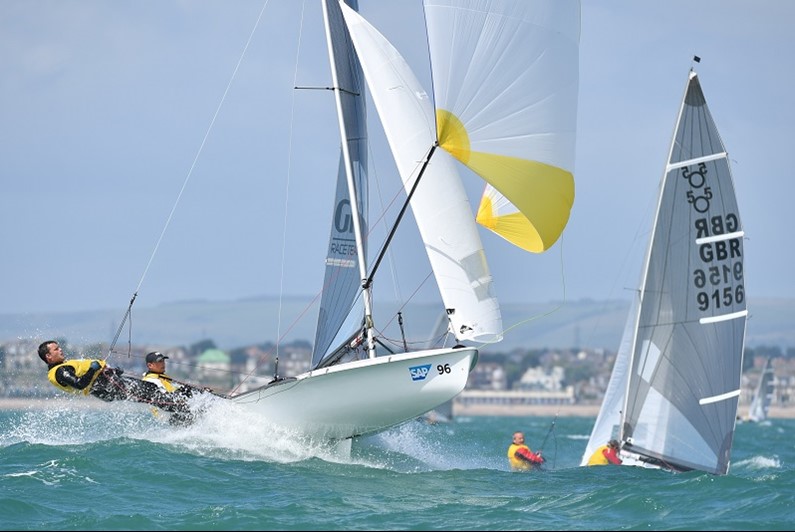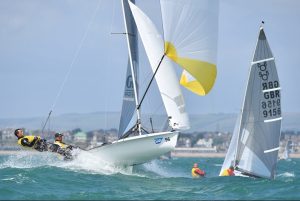

To sail fast in waves and chop you need speed which means powered-up sails and footing off in the worst bits.
As you hit each wave it slows you down and sailing well in waves requires determination, concentration and the correct technique.
When sailing in chop, acceleration mode is the only mode and speed breeds speed. The faster you go the more power you have to deal with speed-sapping waves and to reduce pitching.
Upwind, you will need to sail lower than you normally would to keep the boat fully powered up. Drive to keep the jib telltales flowing with the outside ones starting to lift but not stalling.
To power up your sails there are three settings to achieve this being
1. Angle of Attack 2. Sail Depth and 3. Twist.
To achieve depth with the mainsail, straighten the mast, ease the outhaul and soften the luff with a combination of letting the Cunningham go and easing the halyard.
For the Jib, allow the forestay to sag and move the jib leads forward to make the jib fuller. Move them until all the inside telltales luff evenly up the whole luff of the sail.
Trimming the sheet on takes the twist out of the leech and adds power and assists with pointing. Be careful not to over-trim because you will stall flow which in turn will slow you down.
Creating a little leeward heel can help your performance in chop and create weather helm, which will help you keep the boat on the wind even as the chop tries to push the bow down. (not too much though as too much weather helm creates drag)
On flat-bottomed boats, the heel can also soften the landing when pitching, and concentrate weight low to further reduce pitching and reduce windage.
If you see a particularly nasty set of waves coming, foot off for extra power before you hit them. By sailing low and fast you’ll have extra power to sail over the big ones or steer through them.
Just like going upwind, the first step to downwind performance is to build speed. Head up to a hotter angle with the apparent wind on the beam, this gets the boat moving and establishes flow across the sails.
To build speed, you need to keep the apparent wind forward. Once you’ve got the boat moving downwind, let the apparent wind guide you. Sail as low as you can while keeping the apparent wind blowing in from the side of the boat.
The spinnaker trimmer should provide feedback and if the load on the spinnaker sheet lightens, the trimmer needs to pass that information to the helmsman, “No lower, I’m losing pressure, heat it up.”

